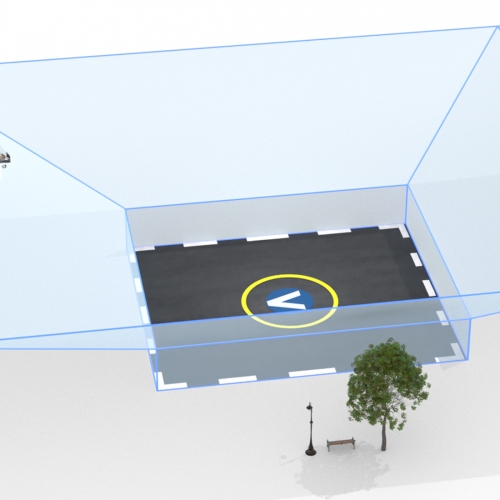
In Australia, where the introduction of VTOL (vertical take-off and landing) aircraft is becoming a near-term reality, there is plenty of effort being applied to planning for their operations at current (helipad/heliport) and future (composite helipad/heliport/vertiport) facilities. There is a heightened sense of urgency to establish appropriate design standards, particularly as the technology progresses from testing/evaluation to operational, and different jurisdictions produce standards and guidance for vertiport design and operation.
The European Union Aviation Safety Agency (EASA) has just released Prototype Technical Design Specifications for Vertiports, following the Federal Aviation Administration’s (FAA) recent release of its own draft Engineering Brief No 105, Vertiport Design.
The Prototype Technical Design Specifications for Vertiports offers guidance to urban planners and local decision-makers as well as industry to enable the safe design of vertiports that will serve these new types of vertical take-off and landing (VTOL) aircraft.
EASA has highlighted as a notable innovation the concept of a funnel-shaped area above the vertiport, designated as an “obstacle free volume” (see the associated image courtesy of EASA). This concept is tailored to the operational capabilities of the new VTOL aircraft, which can perform landing and take-off with a significant vertical segment. Depending on the urban environment and on the performance of certain VTOL-capable aircraft, omnidirectional trajectories to vertiports will be also possible. Such approaches can more easily take account of environmental and noise restrictions and are more suitable for an urban environment than conventional heliport operations, which are constrained in the approaches that can be safely applied.
The EASA specifications differ from the FAA’s requirements in many ways. An obvious difference is the use of a ‘V’ rather than a broken wheel as the vertiport identification marking. Another is a smaller safety area (2 times D) than that required by the FAA (which means comparatively reduced spatial requirements).
This characterising dimension D, specified for the purpose of establishing spatial requirements, differs from the FAA’s controlling dimension (CD).
Under the EASA Specifications:
- ‘D’, for helicopters, means the largest overall dimension of the helicopter, when rotor(s) are turning, measured from the most forward position of the main rotor tip path plane to the most rearward position of the tail rotor tip path plane or helicopter structure.
- ‘D’, for VTOL aircraft, means the diameter of the smallest circle enclosing the VTOL aircraft projection on a horizontal plane, while the aircraft is in the take-off or landing configuration, with rotor(s) turning, if applicable.
Note: If the VTOL aircraft changes dimensions during taxiing or parking (e.g. folding wings), a corresponding Dtaxiing or Dparking should also be provided.
In summary, current helipads/heliports and their associated operational airspace may not be suitable for VTOL aircraft without significant re-design, and new facilities will need to be future-proofed to accommodate a range of requirements that are still in the very early stages of development.
To find out more about Aviation Projects’ vertiport planning capability, contact us.
The EASA Prototype Technical Design Specifications for Vertiports can be downloaded via the following link:
Tags: Vertiport, EVTOL, VTOL, Advanced Air Mobility, AAM, Emerging Aviation Technology, Airport Master Planning